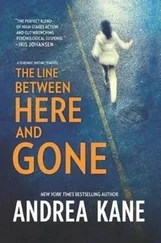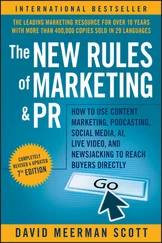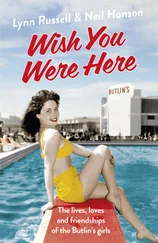Timothy Ferriss - The 4-Hour Workweek - Escape 9–5, Live Anywhere, and Join the New Rich - Expanded and Updated
Здесь есть возможность читать онлайн «Timothy Ferriss - The 4-Hour Workweek - Escape 9–5, Live Anywhere, and Join the New Rich - Expanded and Updated» весь текст электронной книги совершенно бесплатно (целиком полную версию без сокращений). В некоторых случаях можно слушать аудио, скачать через торрент в формате fb2 и присутствует краткое содержание. Жанр: Прочая научная литература, на английском языке. Описание произведения, (предисловие) а так же отзывы посетителей доступны на портале библиотеки ЛибКат.
- Название:The 4-Hour Workweek: Escape 9–5, Live Anywhere, and Join the New Rich - Expanded and Updated
- Автор:
- Жанр:
- Год:неизвестен
- ISBN:нет данных
- Рейтинг книги:3 / 5. Голосов: 1
-
Избранное:Добавить в избранное
- Отзывы:
-
Ваша оценка:
- 60
- 1
- 2
- 3
- 4
- 5
The 4-Hour Workweek: Escape 9–5, Live Anywhere, and Join the New Rich - Expanded and Updated: краткое содержание, описание и аннотация
Предлагаем к чтению аннотацию, описание, краткое содержание или предисловие (зависит от того, что написал сам автор книги «The 4-Hour Workweek: Escape 9–5, Live Anywhere, and Join the New Rich - Expanded and Updated»). Если вы не нашли необходимую информацию о книге — напишите в комментариях, мы постараемся отыскать её.
The 4-Hour Workweek: Escape 9–5, Live Anywhere, and Join the New Rich - Expanded and Updated — читать онлайн бесплатно полную книгу (весь текст) целиком
Ниже представлен текст книги, разбитый по страницам. Система сохранения места последней прочитанной страницы, позволяет с удобством читать онлайн бесплатно книгу «The 4-Hour Workweek: Escape 9–5, Live Anywhere, and Join the New Rich - Expanded and Updated», без необходимости каждый раз заново искать на чём Вы остановились. Поставьте закладку, и сможете в любой момент перейти на страницу, на которой закончили чтение.
Интервал:
Закладка:
Don’t save it all for the end. There is every reason not to.
Q&A: QUESTIONS AND ACTIONS
I am an old man and have known a great many troubles, but most of them never happened.
—MARK TWAIN
If you are nervous about making the jump or simply putting it off out of fear of the unknown, here is your antidote. Write down your answers, and keep in mind that thinking a lot will not prove as fruitful or as prolific as simply brain vomiting on the page. Write and do not edit—aim for volume. Spend a few minutes on each answer.
Define your nightmare, the absolute worst that could happen if you did what you are considering. What doubt, fears, and “what-ifs” pop up as you consider the big changes you can—or need—to make? Envision them in painstaking detail. Would it be the end of your life? What would be the permanent impact, if any, on a scale of 1–10? Are these things really permanent? How likely do you think it is that they would actually happen?
What steps could you take to repair the damage or get things back on the upswing, even if temporarily?Chances are, it’s easier than you imagine. How could you get things back under control?
What are the outcomes or benefits, both temporary and permanent, of more probable scenarios?Now that you’ve defined the nightmare, what are the more probable or definite positive outcomes, whether internal (confidence, self-esteem, etc.) or external? What would the impact of these more-likely outcomes be on a scale of 1–10? How likely is it that you could produce at least a moderately good outcome? Have less intelligent people done this before and pulled it off?
If you were fired from your job today, what would you do to get things under financial control?Imagine this scenario and run through questions 1–3 above. If you quit your job to test other options, how could you later get back on the same career track if you absolutely had to?
What are you putting off out of fear?Usually, what we most fear doing is what we most need to do. That phone call, that conversation, whatever the action might be—it is fear of unknown outcomes that prevents us from doing what we need to do. Define the worst case, accept it, and do it. I’ll repeat something you might consider tattooing on your forehead: What we fear doing most is usually what we most need to do . As I have heard said, a person’s success in life can usually be measured by the number of uncomfortable conversations he or she is willing to have. Resolve to do one thing every day that you fear. I got into this habit by attempting to contact celebrities and famous businesspeople for advice.
What is it costing you—financially, emotionally, and physically—to postpone action?Don’t only evaluate the potential downside of action. It is equally important to measure the atrocious cost of inaction. If you don’t pursue those things that excite you, where will you be in one year, five years, and ten years? How will you feel having allowed circumstance to impose itself upon you and having allowed ten more years of your finite life to pass doing what you know will not fulfill you? If you telescope out 10 years and know with 100% certainty that it is a path of disappointment and regret, and if we define risk as “the likelihood of an irreversible negative outcome,” inaction is the greatest risk of all.
What are you waiting for?If you cannot answer this without resorting to the previously rejected concept of good timing, the answer is simple: You’re afraid, just like the rest of the world. Measure the cost of inaction, realize the unlikelihood and re-pairability of most missteps, and develop the most important habit of those who excel and enjoy doing so: action.
5. www.nexussurf.com
6. This turned out to be yet another self-imposed limitation and false construct. BrainQUICKEN was acquired by a private equity firm in 2009. The process is described on www.fourhourblog.com.
7. http://www.tpl.org/tier3_cd.cfm?content_item_id=5307&folder_id=1545.
4. System Reset.
BEING UNREASONABLE AND UNAMBIGUOUS
“Would you tell me, please, which way I ought to go from here?”
“That depends a good deal on where you want to get to,” said the Cat.
“I don’t much care where …” said Alice.
“Then it doesn’t matter which way you go,” said the Cat.
—LEWIS CARROLL, Alice in Wonderland
The reasonable man adapts himself to the world; the unreasonable one persists in trying to adapt the world to himself. Therefore all progress depends on the unreasonable man.
—GEORGE BERNARD SHAW, Maxims for Revolutionists
SPRING 2005 / PRINCETON, NEW JERSEY
I had to bribe them. What other choice did I have?
They formed a circle around me, and, while the names differed, the question was one and the same: “What’s the challenge?” All eyes were on me.
My lecture at Princeton University had just ended with excitement and enthusiasm. At the same time, I knew that most students would go out and promptly do the opposite of what I preached. Most of them would be putting in 80-hour weeks as high-paid coffee fetchers unless I showed that the principles from class could actually be applied.
Hence the challenge.
I was offering a round-trip ticket anywhere in the world to anyone who could complete an undefined “challenge” in the most impressive fashion possible. Results plus style. I told them to meet me after class if interested, and here they were, nearly 20 out of 60 students.
The task was designed to test their comfort zones while forcing them to use some of the tactics I teach. It was simplicity itself: Contact three seemingly impossible-to-reach people—J.Lo, Bill Clinton, J. D. Salinger, I don’t care—and get at least one to reply to three questions.
Of 20 students, all frothing at the mouth to win a free spin across the globe, how many completed the challenge?
Exactly … none. Not a one.
There were many excuses: “It’s not that easy to get someone to …” “I have a big paper due, and …” “I would love to, but there’s no way I can….” There was but one real reason, however, repeated over and over again in different words: It was a difficult challenge, perhaps impossible, and the other students would outdo them. Since all of them overestimated the competition, no one even showed up.
According to the rules I had set, if someone had sent me no more than an illegible one-paragraph response, I would have been obligated to give them the prize. This result both fascinated and depressed me.
The following year, the outcome was quite different.
I told the above cautionary tale and 6 out of 17 finished the challenge in less than 48 hours. Was the second class better? No. In fact, there were more capable students in the first class, but they did nothing. Firepower up the wazoo and no trigger finger.
The second group just embraced what I told them before they started, which was …
Doing the Unrealistic Is Easier Than Doing the Realistic
From contacting billionaires to rubbing elbows with celebrities—the second group of students did both—it’s as easy as believing it can be done.
It’s lonely at the top. Ninety-nine percent of people in the world are convinced they are incapable of achieving great things, so they aim for the mediocre. The level of competition is thus fiercest for “realistic” goals, paradoxically making them the most time-and energy-consuming. It is easier to raise $1,000,000 than it is $100,000. It is easier to pick up the one perfect 10 in the bar than the five 8s.
Читать дальшеИнтервал:
Закладка:
Похожие книги на «The 4-Hour Workweek: Escape 9–5, Live Anywhere, and Join the New Rich - Expanded and Updated»
Представляем Вашему вниманию похожие книги на «The 4-Hour Workweek: Escape 9–5, Live Anywhere, and Join the New Rich - Expanded and Updated» списком для выбора. Мы отобрали схожую по названию и смыслу литературу в надежде предоставить читателям больше вариантов отыскать новые, интересные, ещё непрочитанные произведения.
Обсуждение, отзывы о книге «The 4-Hour Workweek: Escape 9–5, Live Anywhere, and Join the New Rich - Expanded and Updated» и просто собственные мнения читателей. Оставьте ваши комментарии, напишите, что Вы думаете о произведении, его смысле или главных героях. Укажите что конкретно понравилось, а что нет, и почему Вы так считаете.












